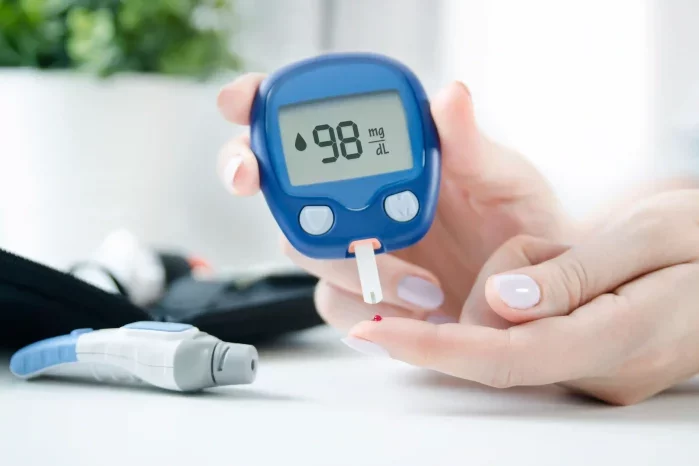Insulin resistance is a growing concern in modern healthcare, often serving as a precursor to type 2 diabetes and other metabolic disorders. Understanding the symptoms of insulin resistance is crucial for early diagnosis and intervention. This article delves into the various signs and symptoms associated with insulin resistance, aiming to provide a comprehensive overview for healthcare professionals and patients alike.
What is Insulin Resistance?
Insulin resistance occurs when the body’s cells become less responsive to the hormone insulin, which is produced by the pancreas. Insulin plays a key role in regulating blood glucose levels by facilitating the uptake of glucose into cells for energy production. When cells resist insulin’s effects, glucose builds up in the blood, leading to higher blood sugar levels. Over time, this can result in type 2 diabetes and other serious health conditions.
Early Symptoms of Insulin Resistance
Elevated Blood Sugar Levels
One of the earliest indicators of insulin resistance is elevated blood sugar levels. Although these levels may not yet reach the threshold for diabetes diagnosis, they can be significantly higher than normal. Regular monitoring of blood glucose levels can help detect this early sign.
Increased Hunger
Also known as polyphagia, increased hunger is a common symptom of insulin resistance. When cells do not effectively absorb glucose, the body perceives this as a lack of energy, prompting an increase in appetite. This can lead to overeating and further exacerbate blood sugar issues.
Frequent Urination
Frequent urination, or polyuria, is another symptom often associated with insulin resistance. High blood sugar levels cause the kidneys to work harder to filter and absorb the excess glucose. This results in increased urine production and the need to urinate more often.
Excessive Thirst
Excessive thirst, or polydipsia, often accompanies frequent urination. As the body loses more water through increased urine output, it triggers a heightened sense of thirst to replenish fluids.
Fatigue
Chronic fatigue is a common complaint among individuals with insulin resistance. When cells cannot efficiently utilize glucose for energy, the body may feel persistently tired and sluggish, even after adequate rest.
Physical Manifestations of Insulin Resistance
Weight Gain and Difficulty Losing Weight
Insulin resistance is closely linked to weight gain, particularly around the abdomen. This visceral fat is more metabolically active and contributes to the worsening of insulin resistance. Additionally, individuals may find it difficult to lose weight despite efforts to exercise and maintain a healthy diet.
Acanthosis Nigricans
Acanthosis nigricans is a skin condition characterized by dark, velvety patches in body folds and creases, such as the neck, armpits, and groin. It is commonly associated with insulin resistance and can be an early physical sign of the condition.
Skin Tags
Skin tags, or small, benign growths of skin, are often found in areas where the skin rubs together, such as the neck, armpits, and under the breasts. Their presence can be linked to insulin resistance and metabolic syndrome.
Elevated Blood Pressure
Hypertension, or high blood pressure, is frequently observed in individuals with insulin resistance. Insulin resistance can lead to an imbalance in the body’s regulation of sodium and potassium, contributing to increased blood pressure levels.
Dyslipidemia
Dyslipidemia, characterized by abnormal levels of lipids in the blood, is common in insulin resistance. This includes elevated levels of triglycerides and low-density lipoprotein (LDL) cholesterol, as well as decreased levels of high-density lipoprotein (HDL) cholesterol. These lipid abnormalities increase the risk of cardiovascular disease.
Metabolic Symptoms of Insulin Resistance
Hyperinsulinemia
Hyperinsulinemia refers to elevated levels of insulin in the blood, which occur as the pancreas produces more insulin in an attempt to overcome cellular resistance. Over time, this can lead to pancreatic exhaustion and the onset of type 2 diabetes.
Pre-diabetes
Pre-diabetes is a condition in which blood sugar levels are higher than normal but not yet high enough to be classified as diabetes. It is a significant indicator of insulin resistance and a critical period for intervention to prevent the progression to type 2 diabetes.
Metabolic Syndrome
Metabolic syndrome is a cluster of conditions that occur together, increasing the risk of heart disease, stroke, and type 2 diabetes. It includes insulin resistance, abdominal obesity, high blood pressure, high triglyceride levels, and low HDL cholesterol levels.
Behavioral and Psychological Symptoms
Cravings for Carbohydrates and Sugary Foods
Individuals with insulin resistance often experience intense cravings for carbohydrates and sugary foods. These cravings are driven by the body’s need for quick energy sources due to inefficient glucose utilization.
Mood Swings and Irritability
Mood swings and irritability can result from fluctuating blood sugar levels. When blood glucose drops suddenly after a high intake of carbohydrates, it can lead to feelings of irritability and mood instability.
Difficulty Concentrating
Also known as “brain fog,” difficulty concentrating is a common symptom of insulin resistance. The brain relies heavily on glucose for energy, and impaired glucose uptake can affect cognitive function, leading to problems with focus and concentration.
Sleep Disturbances
Insulin resistance can disrupt normal sleep patterns, leading to issues such as insomnia or poor-quality sleep. This can further exacerbate fatigue and other related symptoms.
Long-Term Complications of Insulin Resistance
Type 2 Diabetes
If left untreated, insulin resistance can progress to type 2 diabetes. This occurs when the pancreas can no longer produce enough insulin to overcome cellular resistance, leading to consistently high blood sugar levels.
Cardiovascular Disease
Insulin resistance is a major risk factor for cardiovascular disease. The combination of high blood pressure, dyslipidemia, and chronic inflammation associated with insulin resistance significantly increases the risk of heart attacks, strokes, and other cardiovascular events.
Non-Alcoholic Fatty Liver Disease (NAFLD)
NAFLD is a condition characterized by the accumulation of fat in the liver, which is not related to alcohol consumption. It is commonly seen in individuals with insulin resistance and can progress to more severe liver conditions, such as non-alcoholic steatohepatitis (NASH) and cirrhosis.
Polycystic Ovary Syndrome (PCOS)
PCOS is a hormonal disorder commonly seen in women of reproductive age. Insulin resistance plays a significant role in the development of PCOS, leading to symptoms such as irregular menstrual cycles, infertility, and excessive hair growth.
Cognitive Decline
Recent research suggests a link between insulin resistance and cognitive decline, including an increased risk of Alzheimer’s disease. Insulin resistance can affect brain function and contribute to the development of neurodegenerative diseases.
Diagnosing Insulin Resistance
Blood Tests
Several blood tests can help diagnose insulin resistance, including:
- Fasting Blood Glucose Test: Measures blood sugar levels after an overnight fast. Elevated fasting glucose levels can indicate insulin resistance.
- Oral Glucose Tolerance Test (OGTT): Measures blood sugar levels before and after consuming a glucose-rich drink. This test helps assess how well the body processes glucose.
- Fasting Insulin Test: Measures insulin levels in the blood after fasting. Elevated fasting insulin levels can indicate insulin resistance.
- Hemoglobin A1c (HbA1c) Test: Measures average blood sugar levels over the past two to three months. Elevated HbA1c levels can indicate poor blood sugar control and insulin resistance.
Homeostatic Model Assessment of Insulin Resistance (HOMA-IR)
HOMA-IR is a mathematical model used to estimate insulin resistance. It is calculated using fasting blood glucose and fasting insulin levels. A higher HOMA-IR score indicates greater insulin resistance.
Physical Examination
A thorough physical examination can help identify physical signs of insulin resistance, such as acanthosis nigricans, skin tags, and abdominal obesity. Measuring blood pressure and assessing lipid profiles are also essential components of the examination.
Managing and Treating Insulin Resistance
Lifestyle Modifications
Lifestyle modifications are the cornerstone of managing insulin resistance. These include:
- Diet: Adopting a balanced diet rich in whole foods, such as fruits, vegetables, lean proteins, and whole grains, can help manage blood sugar levels and improve insulin sensitivity. Reducing the intake of refined carbohydrates, sugary foods, and saturated fats is crucial.
- Exercise: Regular physical activity, including both aerobic exercise and strength training, can improve insulin sensitivity and help manage weight. Aim for at least 150 minutes of moderate-intensity exercise per week.
- Weight Management: Achieving and maintaining a healthy weight is essential for managing insulin resistance. Even modest weight loss can significantly improve insulin sensitivity.
- Stress Management: Chronic stress can exacerbate insulin resistance. Practicing stress-reducing techniques, such as mindfulness, meditation, and yoga, can help manage stress levels.
Medications
In some cases, medications may be necessary to manage insulin resistance. These include:
- Metformin: Metformin is commonly prescribed to improve insulin sensitivity and lower blood sugar levels. It is often used in individuals with pre-diabetes or type 2 diabetes.
- Thiazolidinediones: These medications help improve insulin sensitivity by reducing insulin resistance in muscle and fat cells.
- GLP-1 Receptor Agonists: These medications help lower blood sugar levels by increasing insulin secretion and reducing appetite.
- SGLT2 Inhibitors: These medications help lower blood sugar levels by preventing the kidneys from reabsorbing glucose, leading to increased glucose excretion in the urine.
Regular Monitoring
Regular monitoring of blood sugar levels, lipid profiles, and other relevant health markers is essential for managing insulin resistance. This helps track progress and make necessary adjustments to treatment plans.
Professional Support
Working with a healthcare team, including a primary care physician, endocrinologist, dietitian, and exercise specialist, can provide comprehensive support for managing insulin resistance. Regular check-ups and consultations help ensure effective management and early intervention if complications arise.
See also: How Insulin Resistance Causes Pcos
Conclusion
Insulin resistance is a complex condition with a wide range of symptoms affecting various aspects of health. Early recognition and management of these symptoms are crucial for preventing the progression to type 2 diabetes and other serious health conditions. By understanding the signs and symptoms of insulin resistance, individuals and healthcare professionals can work together to implement effective lifestyle modifications, medications, and monitoring strategies to improve insulin sensitivity and overall health.
Related topics:
What’s the Effects of Insulin Resistance


























